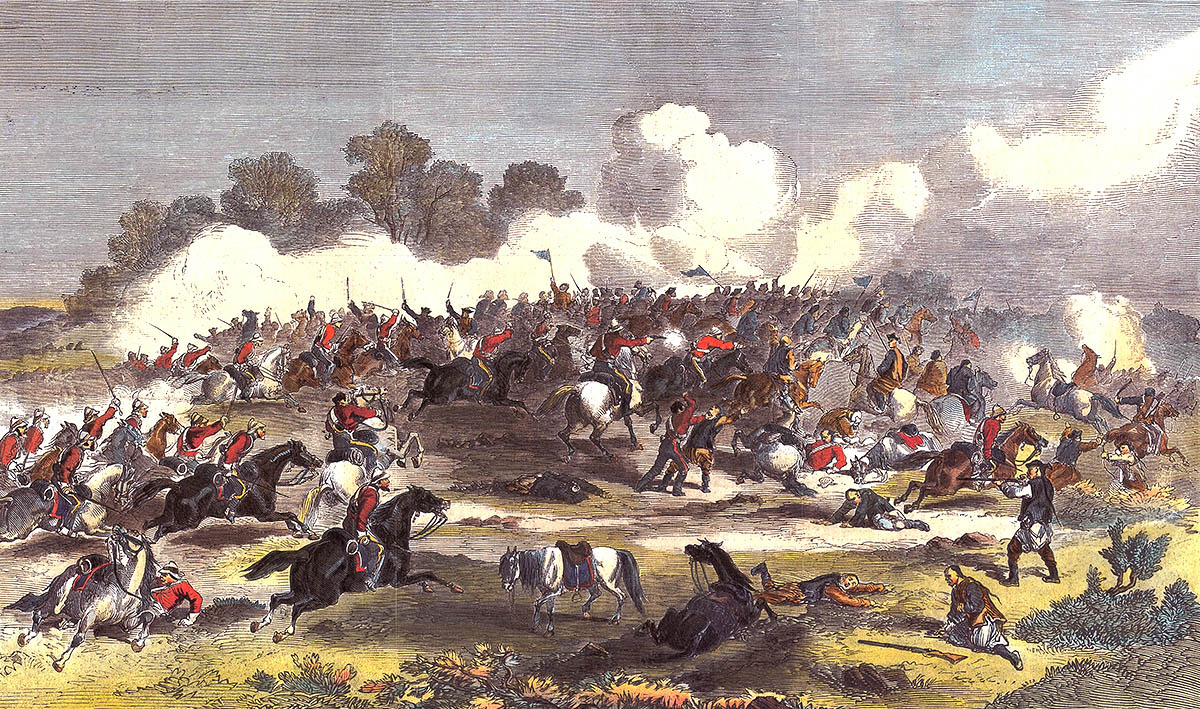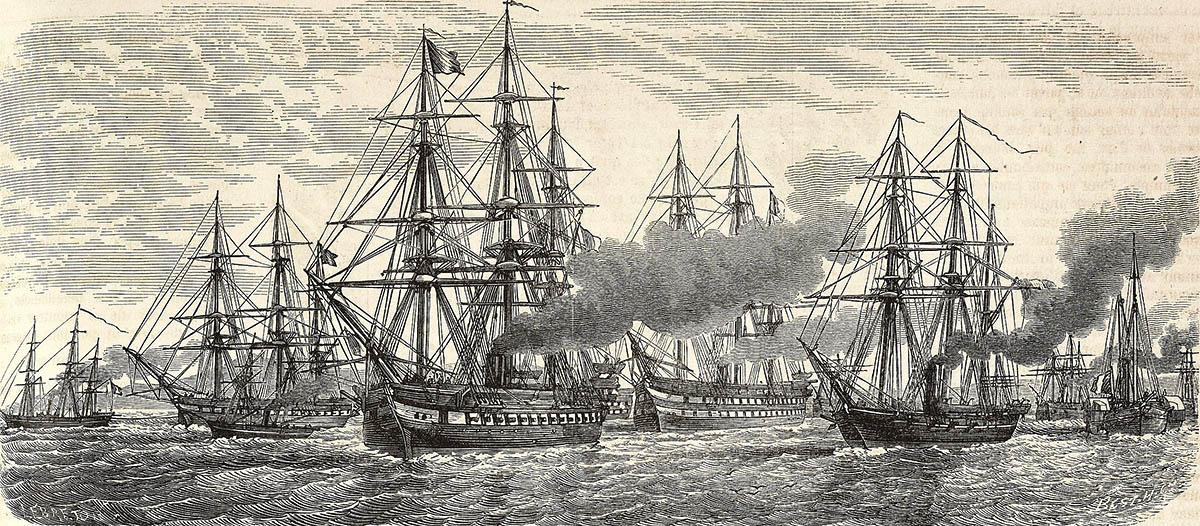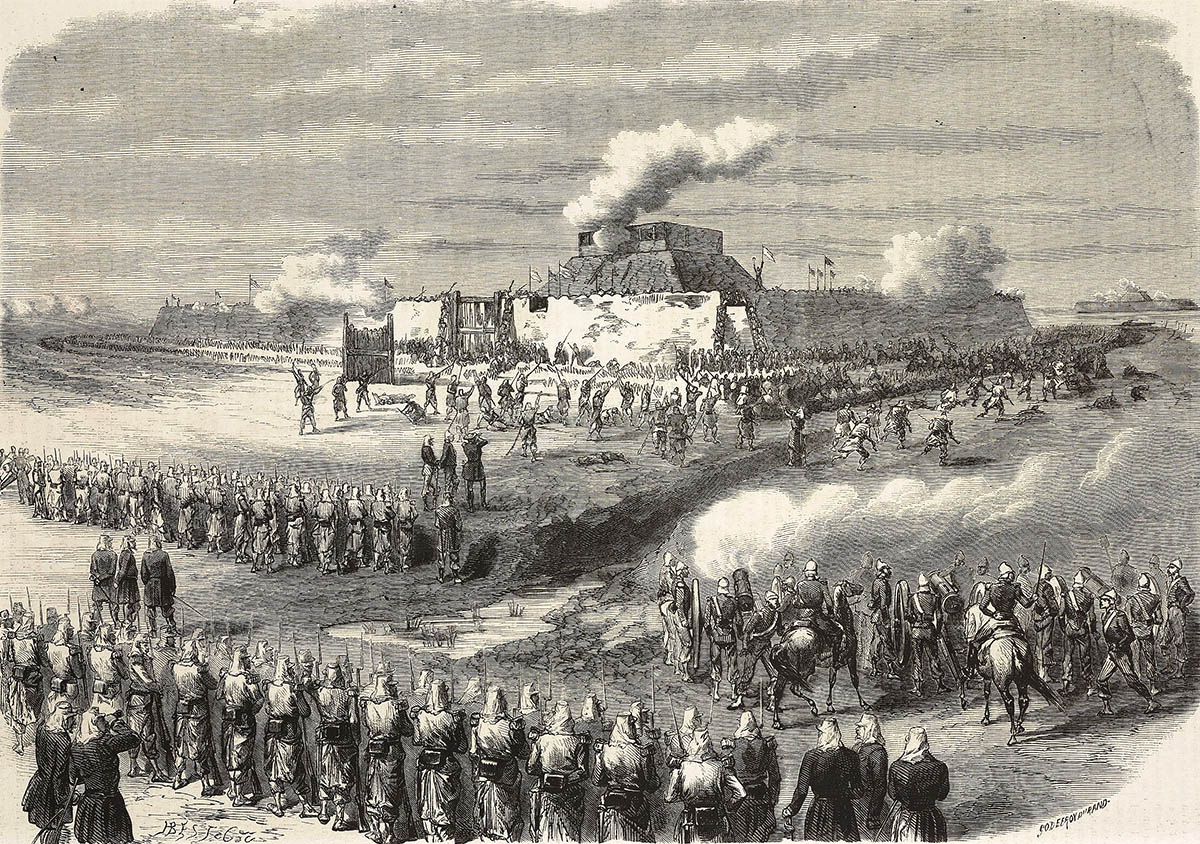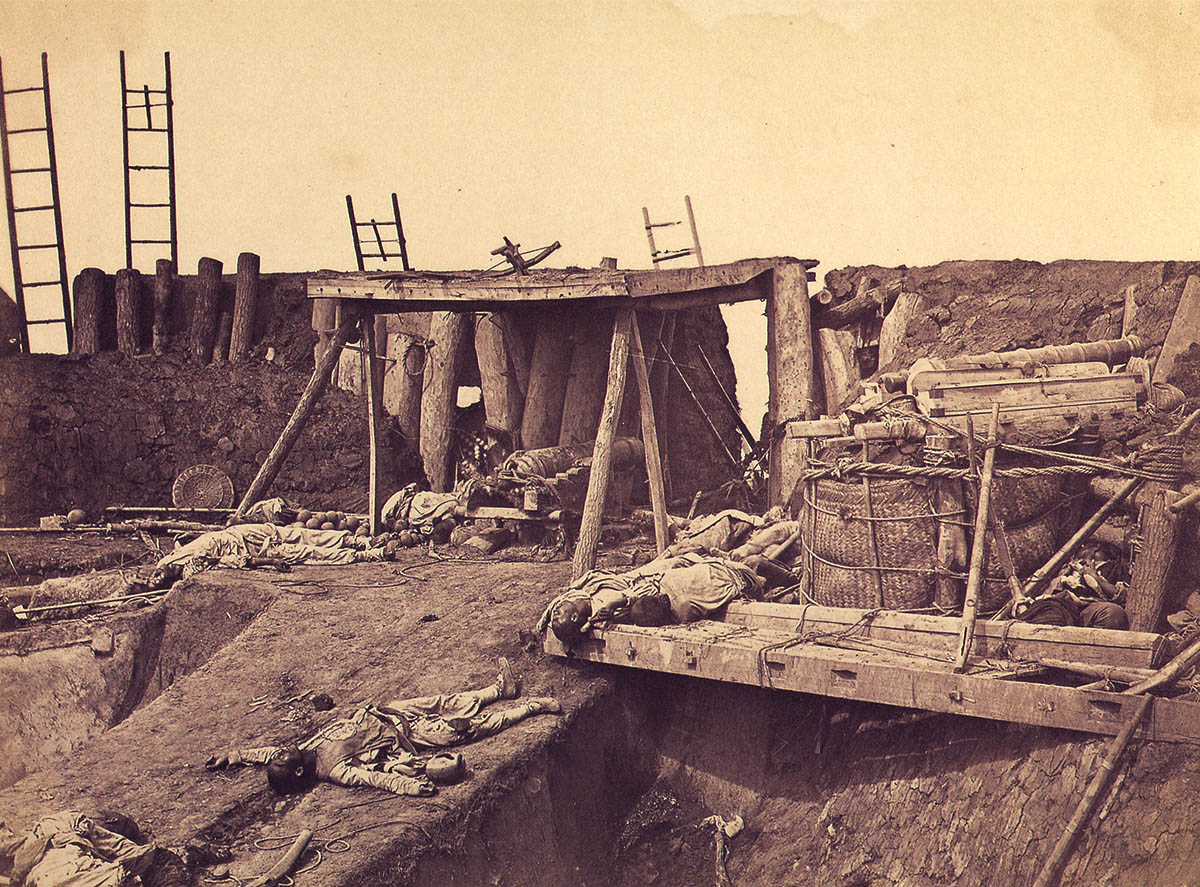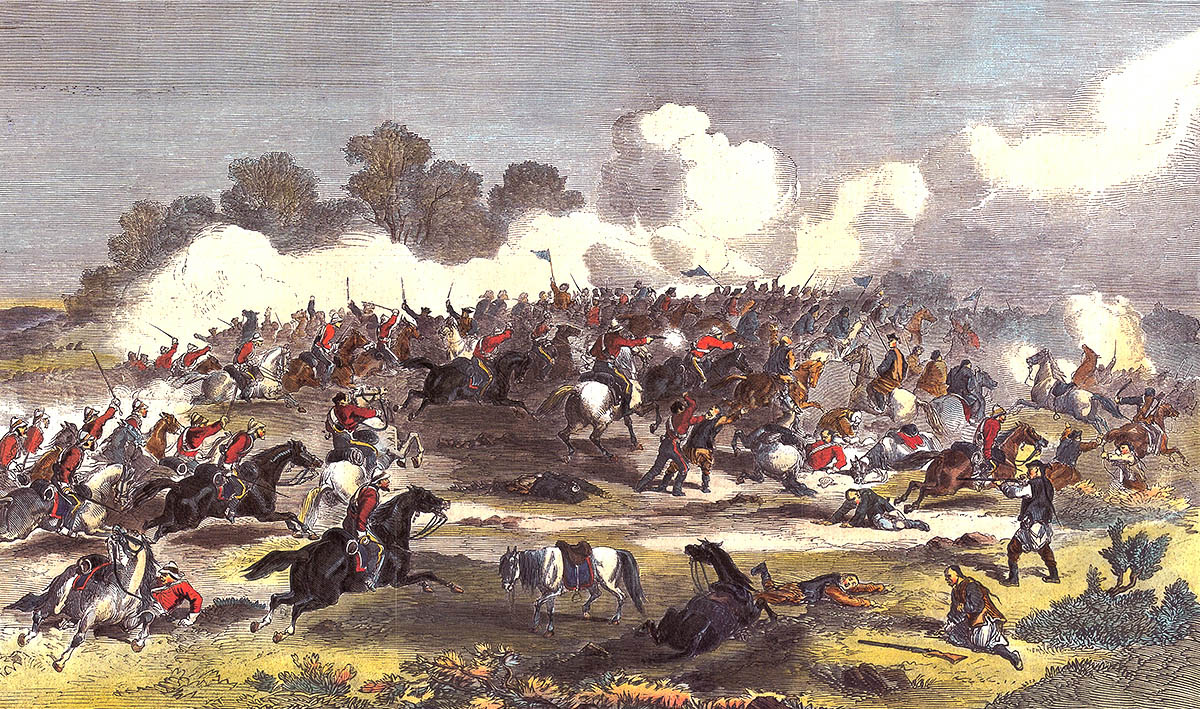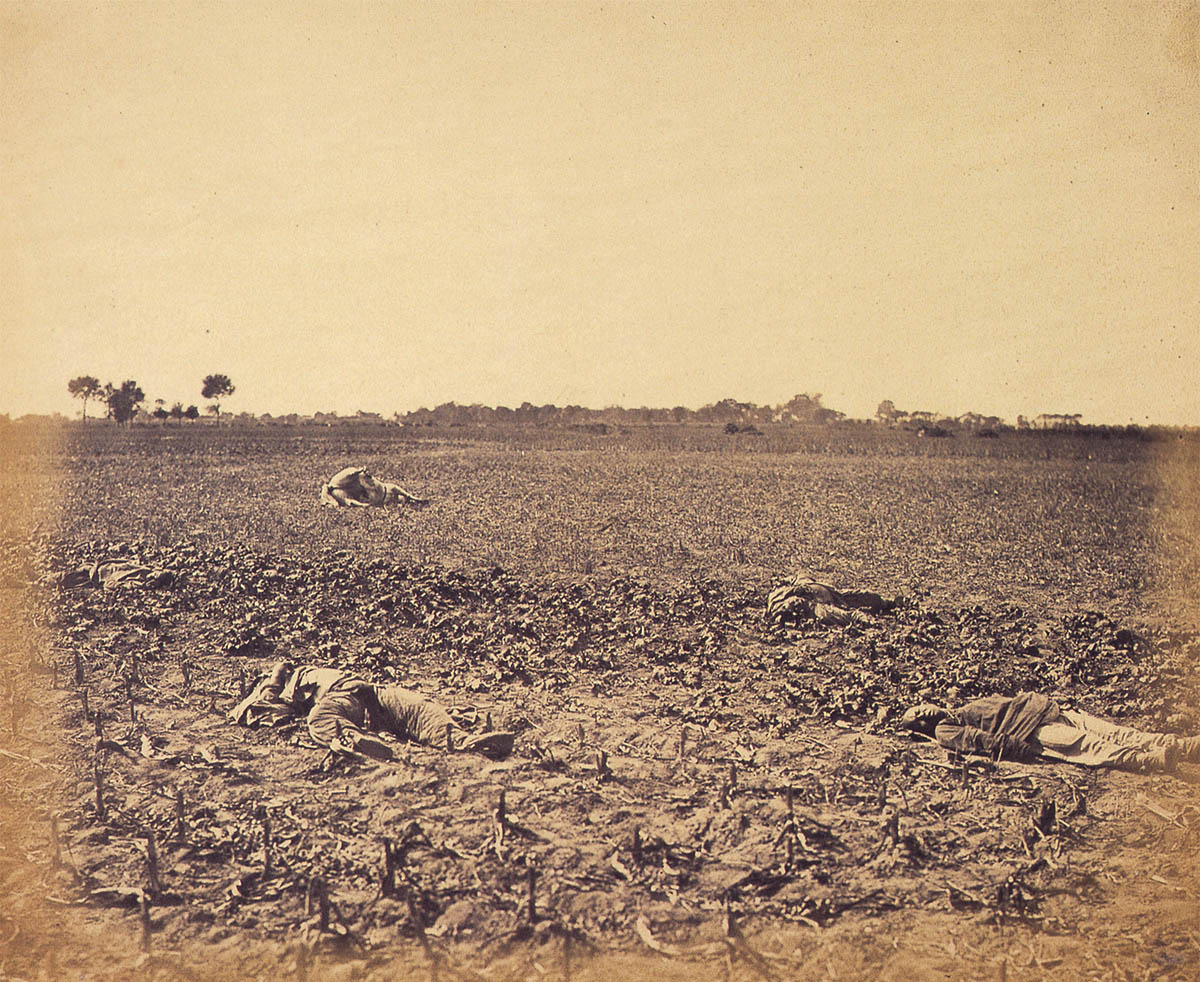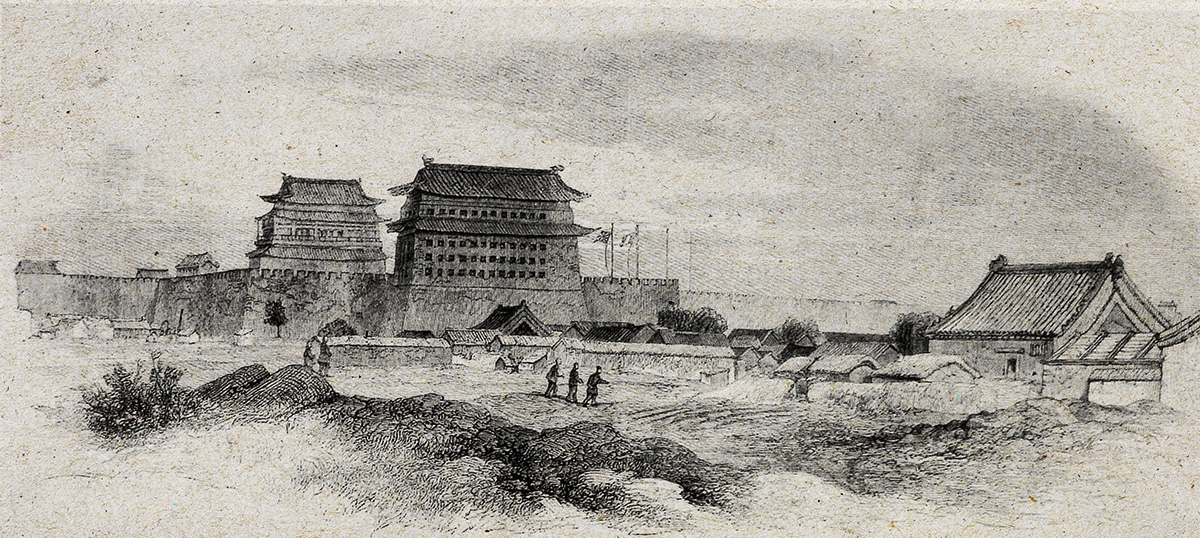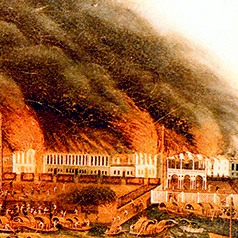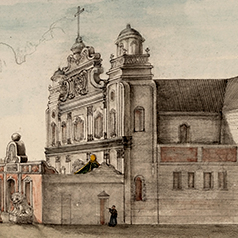After signing the Treaties of Tientsin (《天津條約》, Treaties of Tianjin), the Qing government dispatched General Sengge Rinchen (僧格林沁) to Dagu to shore up the defences and ban the foreign ships from entering there. In June 1859, on their way to ratify the treaty, the envoys of Britain and France refused to land at Beitang (北塘) and make their way to Beijing (北京) from there, the route designated by the Qing government. Instead, they insisted on entering Dagu by force, going so far as bombarding the forts there. The Dagu garrison returned fire, around a dozen British and French warships were sunk and damaged. James Hope, the commander-in-chief of the British fleet, was also injured in the engagement.
In 1860, the Anglo-French alliance proceeded to expand the war by marching northward with a massive force, taking Zhoushan (舟山), Yantai (煙台), Lushun (旅順), and various other cities in succession between April and July, then conquering Dagu and Tianjin in August. In early September, the alliance began to attack Beijing from Tianjin. Qing elite forces led by Sengge Rinchen engaged them at Baliqiao (八里橋) but were vanquished.
The Qing military suffered a string of defeats that sent the capital spiraling into chaos. Unable to stop the advance of the alliance, Emperor Xianfeng (咸豐) made a panicked escape to his imperial resort at Rehe (熱河, now the countryside of Chengde﹝承德﹞in Hebei Province﹝河北﹞) with his consorts and imperial entourage, leaving his brother Yixin (奕訢), also known as Prince Gong (恭親王), in Beijing to negotiate a peace treaty with the invaders. In October, the alliance attacked and entered Beijing, and the Old Summer Palace (Yuanmingyuan, 圓明園) became the target of their wrath.
|
|
Why did the signing of the Treaties of Tientsin fail to put an end to the war? |
|
|
See answer below. |
After signing the Treaties of Tientsin, the Qing government tasked General Sengge Rinchen, a Mongolian prince (yellow-clad figure with a red cape in the picture), to reorganise Dagu’s fortifications in order to better protect Tianjin and Beijing. In June 1859, British and French envoys sent to ratify the Treaties of Tientsin arrived at Dagu in warships. On high alert, the Qing garrison mounted its defences.
The Anglo-French group was requested to land at Beitang and make their way to Beijing from there but they did not comply. Determined to pass through Dagu by force, they began to bombard the forts. General Sengge Rinchen ordered the garrison to return fire, damaging or sinking around a dozen enemy ships, which forced the Anglo-French fleet to retreat.
The military setback at Dagu prompted the Anglo-French alliance to expand the war. In 1860, the Anglo-French fleet launched a massive assault, seizing Zhoushan, Yantai, Lushun, and various other strategic locations in succession between April and July as their forces made a beeline for Dagu and Tianjin.
In August 1860, the alliance launched a brutal attack on the Dagu Forts.
Although the garrison put up a valiant defence, they proved no match for the superior armaments of the alliance and were overwhelmed. The photo shows the Shifeng Battery (石縫炮台) located on the northern coast of the Dagu Forts after its capture by the Anglo-French alliance. Bodies of Qing soldiers who were killed can be seen everywhere.
After conquering Dagu, the Anglo-French alliance promptly marched north and captured Tianjin.
Once Tianjin was occupied, the Anglo-French alliance pressed onward to Beijing. In September, they waged a massive battle with the Qing force at Baliqiao, a bridge spanning the Tonghui River (通惠河). It was around four kilometres from the west of Tongzhou City (通州城) and only around four kilometres from Beijing.
Despite their valiant resistance, the Qing military was crushed by the alliance’s overwhelming firepower and suffered huge casualties. The picture shows Qing soldiers slain in the Battle of Baliqiao.
At the Battle of Baliqiao, the Mongolian cavalry under General Sengge Rinchen served as the Qing military’s primary attack force. Considered the most elite unit in the military at that time, the General’s army was mostly decimated in the battle. Although it was later reformed and retrained, its combat strength was greatly diminished. This indirectly led to Sengge Rinchen’s death and the army’s annihilation while battling the Nian Rebellion in 1865. In the dozen or so years prior to his death, Sengge Rinchen had been a pillar of the Qing regime, playing an indispensable role in annihilating the Taiping Rebellion’s northern expedition forces, defending the regime against the Anglo-French alliance and putting down the Nian Rebellion. While this over-reliance on one person could be partly attributed to Sengge Rinchen’s outstanding battle prowess, it also indicated a dearth of capable warriors among the Qing and Mongolian nobility during the dynasty’s later years.
In October 1860, the Anglo-French alliance launched an assault on Beijing. Pictured are the city gates of Beijing captured by the Anglo-French alliance. Prior to the alliance’s arrival in the capital, Emperor Xianfeng had already fled to Rehe with his consorts and imperial entourage.
A battle was fought between the alliance and the Qing military in Beijing. On 13 October 1860, the Anglo-French alliance entered Beijing, marking the first time in the early modern era that a foreign army had occupied the Chinese capital. Upon their entry into the city, the invaders turned their sights on the Old Summer Palace, setting the stage for a cultural catastrophe.
|
|
Why did the signing of the Treaties of Tientsin fail to put an end to the war? |
|
|
Although the Treaties of Tientsin had been initialed, both treaty parties were unhappy with the terms, which led to the re-ignition of war: to prevent being humiliated diplomatically and militarily again, the Qing government immediately took steps to fortify Dagu and ban foreign ships from entering there; Britain and France, meanwhile, saw the hostile reception during their journey to ratify the treaty as an excuse to instigate war on a larger scale. Their goal was to force the Qing government to submit, which was to ensure their own interests in China would be fully safeguarded. |
Source of most photos used in this feature piece: Visual China Group (pictures 3, 4, 6), Fotoe (pictures 1, 2, 5, 7-10).




